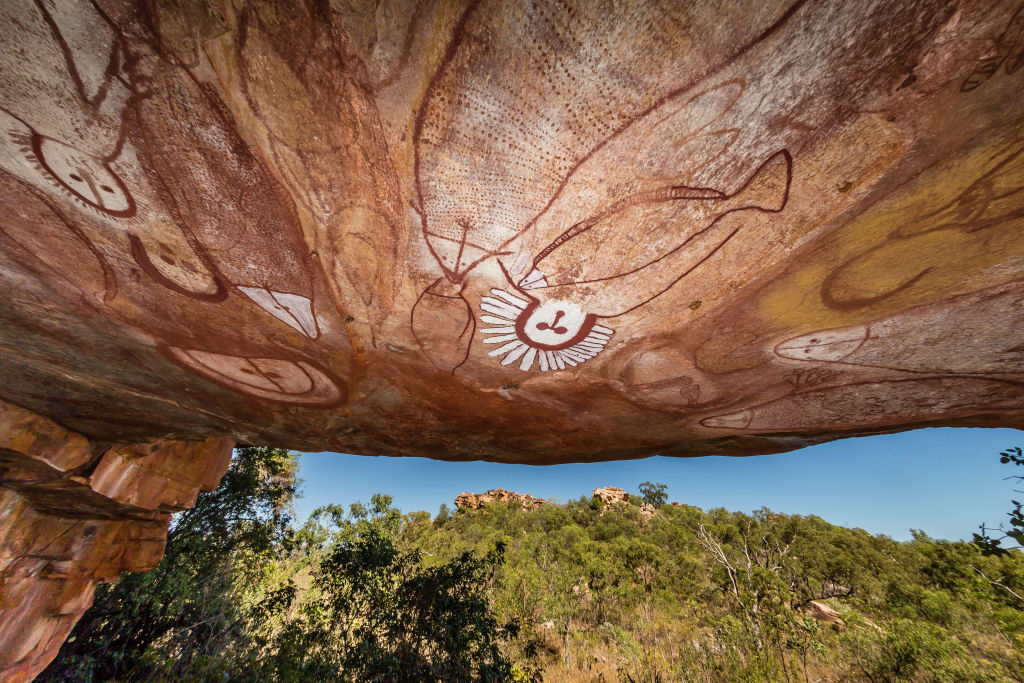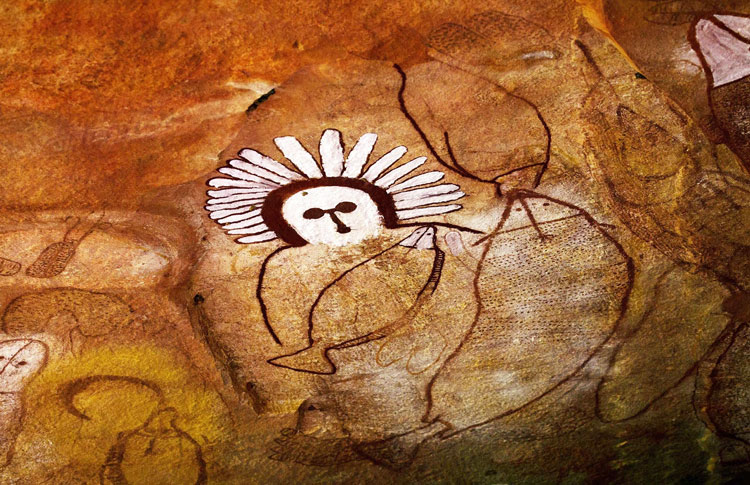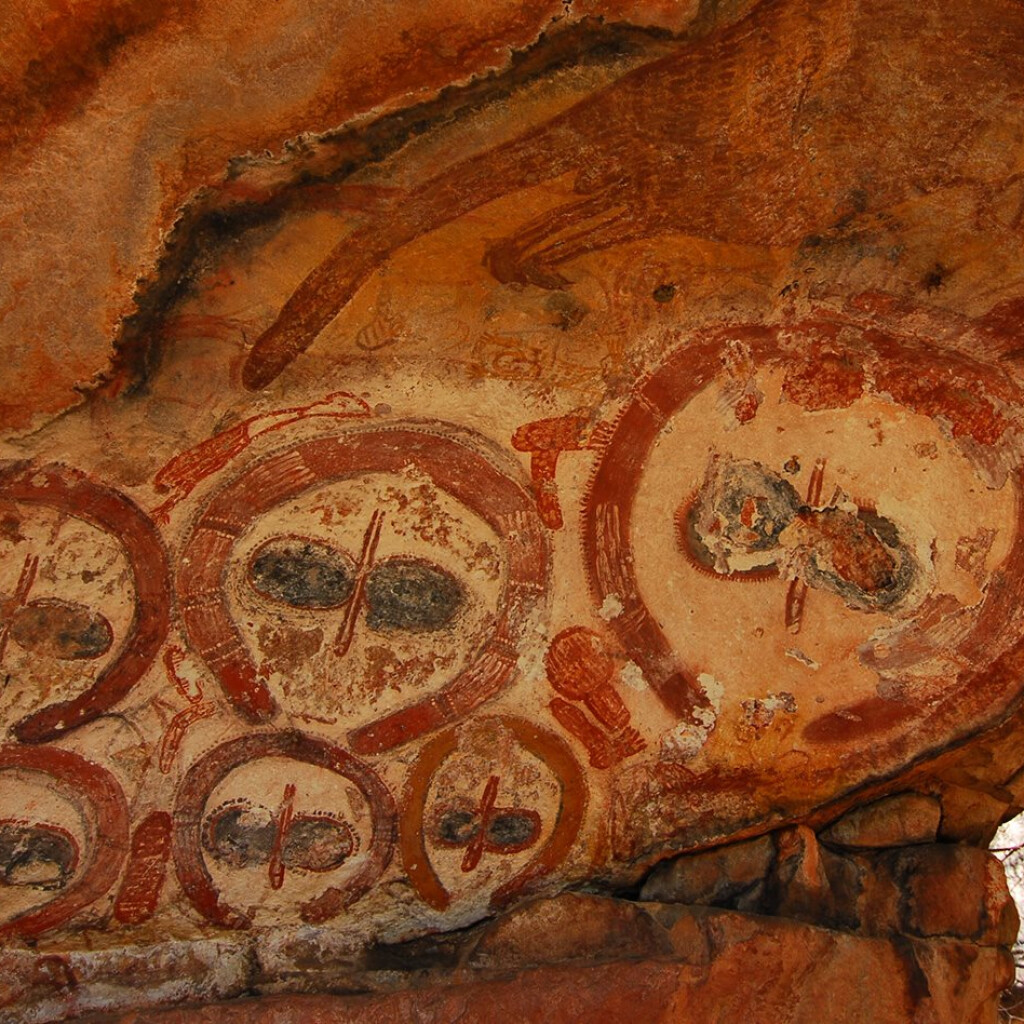Introduction
In the remote and rugged Kimberley region of north-western Australia, a remarkable treasure trove of ancient art lies hidden in the vast landscape. These rock art masterpieces, created by the Indigenous Australians, date back an astonishing 41,000 to possibly 50,000 years, making them among the oldest human-made artworks on Earth. This extraordinary legacy, preserved through the centuries, offers a glimpse into the rich cultural heritage and artistic prowess of the region’s first inhabitants.

Scattered across rock shelters, boulders, and flat rock surfaces, these ancient artworks showcase a diverse array of styles and techniques. From the intricate details and dynamic poses of the Gwion Gwion paintings to the captivating Wandjina spirits with their large eyes and halo-like heads, the Kimberley’s rock art is a testament to the ingenuity and creativity of its creators. The artists employed a range of mediums, including ochre pigments, carved rock, beeswax, resin, and even arranged stones to craft their symbolic designs.
Despite the passage of millennia, the durability of these artworks is truly remarkable, thanks to the unique properties of ochre and the remote locations that have shielded them from vandalism and the ravages of time. Today, Indigenous Rangers and archaeologists work tirelessly to manage and protect these precious sites, ensuring their preservation for future generations to marvel at and learn from.
The Kimberley: A Vast and Untamed Landscape
The Kimberley region of north-western Australia is a vast and untamed landscape, characterized by its rugged terrain, remote wilderness, and rich cultural heritage. Spanning an area of over 420,000 square kilometers, the Kimberley is a land of contrasts, where towering sandstone cliffs, lush tropical forests, and vast savannas coexist in a delicate balance.

This ancient land has long been the home of the Indigenous Australians, who have inhabited the region for tens of thousands of years. The Kimberley is the traditional land of numerous Aboriginal language groups, each with their own unique customs, beliefs, and artistic traditions. It is within this rich cultural tapestry that the region’s remarkable rock art has been created and preserved.
Uncovering the Oldest Rock Art on Earth
The rock art of the Kimberley is a true marvel, not only for its sheer age but also for the remarkable diversity of styles and techniques employed by its creators. Estimates suggest that there are tens of thousands of rock art sites scattered across the region, many of which remain undiscovered, waiting to be unearthed and studied.
The earliest known rock art in the Kimberley dates back an astonishing 41,000 to possibly 50,000 years, making it among the oldest human-made artworks on the planet. This ancient legacy predates the cave paintings of Europe by tens of thousands of years, underscoring the remarkable artistic achievements of the region’s first inhabitants.

One of the most renowned styles of Kimberley rock art is the Gwion Gwion, also known as the “Bradshaw” paintings. These intricate and dynamic figures, often depicted in elaborate costumes and poses, are believed to have been created between 17,000 and 10,000 years ago. The level of detail and sophistication in the Gwion Gwion paintings is truly breathtaking, showcasing the artistic prowess of their creators.
Another iconic style of Kimberley rock art is the Wandjina, which features large-eyed, halo-headed figures that are believed to represent spiritual beings or ancestors. These captivating images, which can be found across the region, are thought to have been created over the past 4,000 years, continuing a long-standing artistic tradition.
Techniques and Materials: The Artistry of the Kimberley
The Indigenous artists of the Kimberley employed a wide range of techniques and materials to create their remarkable rock art. One of the most commonly used pigments was ochre, a naturally occurring mineral that is found in various shades of red, yellow, and brown. Ochre’s strong bond with the region’s sandstone surfaces has allowed many of these ancient artworks to endure for millennia.
In addition to ochre, the Kimberley artists also utilized other natural materials in their creative process. Some carved directly into the rock, while others applied beeswax and resin to create their designs. Interestingly, some artists even arranged stones in specific patterns to convey symbolic meanings or create striking visual effects.

One unique technique employed by the Kimberley artists was the use of “scraped” or “rubbed” designs, where they would scrape away the surface of the rock to reveal contrasting colors underneath. This method allowed them to create intricate patterns and designs that stood out against the natural hues of the rock.
The diversity of materials and techniques used by the Kimberley artists is a testament to their ingenuity and adaptability. By drawing on the resources available in their environment, they were able to create a rich and varied artistic legacy that continues to captivate and inspire people from around the world.
Preserving the Past: Protecting the Kimberley’s Rock Art
The remarkable durability of the Kimberley’s rock art is not just a testament to the skill and craftsmanship of its creators, but also to the remote and isolated locations where many of these sites are found. Tucked away in rugged rock shelters and hidden among the region’s vast wilderness, these ancient artworks have been largely protected from the ravages of time and human interference.
However, the Kimberley’s rock art sites are not entirely immune to the threats of modern life. Vandalism, environmental degradation, and the impacts of tourism can all pose significant challenges to the preservation of these precious cultural treasures. In response, Indigenous Rangers and archaeologists have teamed up to develop comprehensive management and protection strategies.

One of the key initiatives is the establishment of Indigenous Ranger programs, which empower local communities to take an active role in the stewardship of their ancestral lands and cultural heritage. These Rangers work tirelessly to monitor the condition of rock art sites, document any changes or damage, and implement conservation measures to ensure their long-term survival.
In addition to the work of the Rangers, archaeologists and heritage experts have also played a crucial role in the preservation of the Kimberley’s rock art. Through detailed documentation, scientific analysis, and the development of innovative preservation techniques, they have been able to better understand the unique challenges faced by these ancient artworks and develop strategies to address them.
Despite the ongoing efforts to protect the Kimberley’s rock art, the task is far from easy. The sheer scale of the region, the remoteness of many sites, and the limited resources available all present significant challenges. However, the commitment and dedication of the Indigenous Australians, archaeologists, and heritage professionals working to safeguard this remarkable cultural legacy is a testament to the importance of preserving our shared human history.
Conclusion: A Legacy Preserved
The rock art of the Kimberley region in north-western Australia is a truly remarkable and awe-inspiring testament to the artistic prowess and cultural heritage of the Indigenous Australians. With some of the oldest human-made artworks on Earth, dating back an astonishing 41,000 to 50,000 years, these ancient masterpieces offer a window into the past, revealing the creativity, ingenuity, and deep connection to the land of the region’s first inhabitants.
From the intricate Gwion Gwion paintings to the captivating Wandjina spirits, the Kimberley’s rock art showcases a diverse array of styles and techniques that have stood the test of time. The durability of these artworks, thanks to the unique properties of ochre and the remote locations that have shielded them, is a testament to the skill and dedication of their creators.
Today, the preservation of the Kimberley’s rock art is a collaborative effort between Indigenous Rangers and archaeologists, who work tirelessly to document, manage, and protect these precious cultural treasures. As we continue to uncover the mysteries of this ancient legacy, we are reminded of the enduring power of art to connect us to our past and inspire us to safeguard our shared cultural heritage for generations to come.
